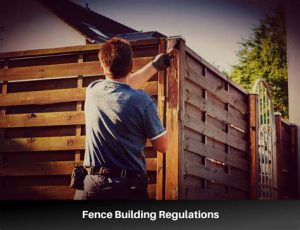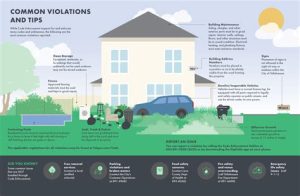Discover essential steps for navigating local fencing regulations, permit requirements, and compliance with zoning laws to ensure a smooth application process.When it comes to enhancing your property’s privacy, security, and aesthetic appeal, installing a fence can be a rewarding endeavor. However, before you dive in, it’s essential to understand the various local regulations that govern fence construction in your area. Navigating these guidelines can feel overwhelming, but knowing the ins and outs of permit requirements is crucial to avoid costly mistakes and potential fines. In this blog post, we will guide you through the necessary steps to ensure your fencing project is compliant with local laws. From grasping the specific regulations in your municipality to researching and navigating the permit application process, we’ll explore key considerations that will help you erect your fence with confidence. Join us as we uncover how to consult local authorities and ensure your new boundary meets zoning laws, setting the stage for a successful and compliant fencing project.
Understanding Local Fencing Regulations
When planning to install a fence, one of the most essential steps is understanding local fencing regulations. These regulations dictate everything from the type of materials you can use to how tall your fence can be. This is important because non-compliance can lead to fines, the requirement to dismantle the fence, or even legal disputes with neighbors.
Different municipalities have varying rules based on their unique landscape, climate, and community standards. For instance, residential zones may have specific height restrictions and aesthetic guidelines that differ significantly from commercial areas. It’s also crucial to note that some cities might have regulations regarding setback requirements, which dictate how far a fence must be from property lines. Thus, understanding these rules can save you time, money, and hassle.
The best way to ensure you are adhering to local fencing regulations is to research them thoroughly before starting your project. This may include checking the official website of your city or county, consulting with local experts, or even engaging with your neighbors to understand their experiences. By doing your due diligence, you can ensure that your fencing project is both successful and compliant with local laws.
Researching Permit Requirements in Your Area
When it comes to installing a fence around your property, understanding the permit requirements in your area is crucial. Many homeowners assume that they can start building without any formalities, but local regulations often dictate the need for permits. Failing to adhere to these requirements can lead to fines and may even require you to remove the newly installed fence.
The first step in your research should be to visit your local government’s website, where most zoning and building codes are published. Look for sections related to residential fencing, as they typically detail the specific requirements for obtaining a permit. Some towns may have GIS (Geographical Information Systems) mapping tools that display any guidelines specific to your area.
Another valuable resource is your local planning and zoning department, where officials can help clarify any uncertainties. For example, some areas may have restrictions on the height, materials, and placement of fences.
Navigating the Application Process
Navigating the application process for a fence permit can often feel like a daunting task, especially if you’re unfamiliar with local regulations. To ensure a smooth experience, it’s crucial to understand the steps involved and gather all necessary documentation before you begin.
First, check your local government’s website or the municipal office to find specific applications relevant to fence permits. You may need to download forms or fill them out online. Ensure that you provide all required information accurately to avoid delays.
After submitting your application, be prepared for potential inspections or public hearings. Local authorities may require you to show how the proposed fence complies with zoning laws and neighborhood guidelines. It’s beneficial to stay engaged during this process, promptly responding to any requests for additional information from officials.
In summary, understanding the application process involves thorough research, timely submissions, and effective communication with local authorities. By adhering to these steps, you’ll help facilitate a successful permit approval.
Consulting with Local Authorities
When it comes to installing a fence, consulting with local authorities is a crucial step in ensuring that you are compliant with all necessary regulations. Local authorities not only provide guidance on what is permissible but also keep you informed about any changes in legislation that might affect your project.
It is recommended to start your inquiry with the local building department or zoning office. They can offer valuable information about setback regulations, height restrictions, and specific design requirements that may apply to your area. Understanding these parameters can save you time and resources during your fencing project.
Additionally, engaging with local authorities allows you to ascertain whether a fence permit is required. If so, they can guide you through the necessary forms and processes. Always keep in mind that the requirements can differ significantly from one location to another, and staying informed through direct communication with local officials is the best way to ensure you’re on the right track.
Ensuring Compliance with Zoning Laws
Understanding zoning laws is a crucial step in the fence permit process. These laws dictate how properties can be used and often include specific regulations regarding the types of structures, including fences, that can be built. Before you begin any fencing project, it’s essential to check with your local zoning board to ensure that your plans align with these regulations.
Typically, zoning regulations vary by municipality and can affect the height, materials, and even the placement of your fence. For instance, some areas might prohibit fences of a certain height in front yards while allowing taller fences in backyards.
| Zoning Element | Description |
|---|---|
| Height Restrictions | Limits on how tall your fence can be in different areas of your property. |
| Setback Requirements | Regulations on how far the fence must be from the property line. |
| Permitted Materials | Requirements or restrictions on the types of materials used for fences. |
Moreover, failing to comply with zoning laws can result in penalties, including fines or orders to remove a non-compliant structure. Therefore, before moving forward with your fencing project, take the time to review local regulations and obtain any necessary permits. Consulting with a professional can also help ensure compliance, avoiding potential issues that could arise during or after installation.
Frequently Asked Questions
What are fence permits and why are they necessary?
Fence permits are official approvals required by local governments before constructing a fence. They ensure that the fence complies with zoning laws, building codes, and property boundaries.
How do I find out if I need a fence permit in my area?
You can check with your local building department or municipal office. Most cities have guidelines available online, detailing when a permit is required for fence installation.
What factors might determine whether I need a permit for my fence?
Factors include the height of the fence, its purpose (e.g., privacy, security), proximity to property lines, and local zoning laws that may have specific restrictions.
What is the typical process for applying for a fence permit?
The typical process involves submitting a permit application, providing site plans or drawings, paying a fee, and possibly attending a hearing if objections arise.
How long does it usually take to get a fence permit approved?
Approval times can vary widely depending on the locality, but it usually takes anywhere from a few days to several weeks after submission of the application.
What are the possible consequences of building a fence without a permit?
Building without a permit can lead to fines, removal of the fence, and legal disputes with neighbors or local authorities.
Are there any resources or tools available for understanding local fencing regulations?
Yes, many local government websites have resources for residents, including zoning maps, fencing regulations, FAQs, and sometimes even interactive tools to assist in planning your fence.





